Just a quick post to share how I handle XP in my 'Lamentations of the Flame Princess' campaign.
I use the XP for monsters and treasure as given. At first I thought of using the XP for monsters from 'Castles & Crusades' but ended up realizing they're actually pretty close on average, and truth be told LotFP's is less hassle.
However, I have adopted some XP methods from 'Castles & Crusades' into the game. Not the one that gives XP to a player for owning magic objects though, that one I think is a bit weird. A 'traditional' magic object already makes you more powerful, why exactly should it also give you XP? Anyway. Maybe I'd give extra XP to players who keep a cursed object though, as they learn new tricks to compensate for the problem it causes them. Same goes for a player who gets maimed. (for that, I'd use Story XP, which I'll mention in a moment.)
I have decided to use their XP for role-playing too. It felt like the least I could do after all of the player's characters had their teeth pulled out last session and they had to talk/act as such.
I've also decided I'm going to use C&C's XP for Story. Now, I won't award 'Story XP' for things like 'Succeeded in the Goal of Killing the Troll under the Bridge' or anything like that. The XP from killing the monster already covers that. (Although I could see it used for defeating a whole organization where a lot of planning was needed.) Instead, some characters or Hexes in my map contain secrets. If the characters discover such secrets, they get a bonus XP from having learned more about the world they inhabit. (A King's secret will be worth a lot more XP than a local farmer's!) I also recently read on another blog (Which I'll try to find again and link here at a later date/edit!) the idea of XP for traveling. I think it's a good idea to give certain difficult locations XP for finding them, again using the Story XP as a guideline. Not for 'normal' things like a dungeon and such, but maybe things like discovering a new dimension or traveling to another continent and dealing with a whole new culture for a prolonged time.
Finally, since neither LotFP nor C&C give XP for traps, I'll use once again the Story XP rewards for the traps. Seems like an easy way to acknowledge that dealing with traps should also make characters more experienced, not just smacking monsters and other enemies down and snatching their loot.
Tuesday 23 April 2013
Sunday 21 April 2013
Attack of the Tooth Fairies!
The Cast
Illavir: (Played by Chloe) A female Level 1 Elf exiled to the Human world because she fell in love with the monstrous and extremely powerful Snake-Woman she was supposed to watch over to ensure her captivity. She is looking for a way to go back to her moon to see her beloved again.
Bruce Dragon's Bane: (Played by Cindy) A Level 1 Fighter and adventurer who follows Illavir around for strength in numbers. He has never even seen a dragon before, it's just a name he's given himself.
Rulius and Kelly: (Played by Stephane and Valerie, respectively) A father (Rulius) and son (Kelly) who escaped the clan of thieves and assassins they used to work for (Clan Slahvel) because Rulius overheard the clan was going to use his son as a sacrifice for a ritual. The clan doesn't just let members leave of course, so both are on the run. Both characters are Level 1 Specialists, the 'Lamentations of the Flame Princess' equivalent of the Rogue/Thief class in other versions of the game.
The Story
It all started on the first session of the new D&D game I'm running. A thief stole the elf's purse, someone else in the party noticed, they caught the thief and stole his purse on top of retrieving the elf's.
What was in the thief's purse? I grabbed 'Vornheim: The Complete City Kit' and rolled on the "I search the body" Table. I got a 'Crushed fairy/brownie/pixie/leperchaun'... Except I realized it was 'crushed' just now as I checked in the book again for this post. At the moment I rolled it, I totally read 'cursed'!
So my players open the coin purse and find a fairy inside...
And I describe it as just a small humanoid and such, trying to keep a mystery around it, but everyone just calls it a fairy and, well, that's what it is. (Not that I confirmed it then!)
So Kelly decides to keep her. As a side-note, I told them she had her wings cut off.
Someone in the group mentioned, all amused, that if this was supposed to be a 'Horror D&D' type of game as I had told them, the fairy really wasn't helping the horror mood. But they didn't know it was a CURSED fairy. (That should have been crushed, but I hadn't noticed that and the story turned out to be much more interesting with a cursed one instead!) So I just took the jab and kept silent about it.
The party went to the village where the adventure hook was, a local couple let them stay in their house for the night, and Kelly treated the fairy akin to a freaking cute hamster pet or something.
They just brought this supernatural creature they knew nothing about along with them to the place where they intended to rest.
Before they all went to bed, I told Kelly's player that the fairy reaches to kiss him on the lips. Kelly does not move, the kiss happens. I had decided that would be how the curse would take effect, so I asked Valerie (Kelly's player) to roll her save against Magic. She failed. We stopped the first session with the group going to sleep and Kelly doing the first guard shift.
Now this is where things get interesting as I had time to think about how exactly the fairy was cursed in-between sessions. I decided the kiss would be a Fairy Kiss, which acts as a beacon to other fairies of the same kind, as the one they had considered herself a captive of the huge folk without wings.
When the second session started, I rolled a die to see during whose guard shift it would happen. Kelly's shift ended and she went to wake up Illavir the elf. Illavir had been standing guard for barely one hour when, coming down from the upper floor she saw two swarms of fairies armed with swords heading their way!
Their wings projected fairy dust all around them. One swarm surrounded Rulius and he breathed their fairy dust. I asked him to roll v.s Poison and he failed the roll, causing him to fall asleep. Illavir took the wingless fairy and held her towards the other fairies, indicating they could have her back. The fairies were having none of that diplomacy crap though! They tried to make Illavir go to sleep too, but as an elf she was immune to such tricks. The other swarm proceeded to part Rulius' lips open and pull out one of his front teeth.
Players suddenly realized sh*t got real. Illavir made the mistake of trying to cast a Shield spell while surrounded by the swarm, who stung her with countless scalpel-sized blades and interrupted her spell on top of wounding her. Kelly was put to sleep as he tried to drag his dad away. Bruce swung at one swarm with his claymore, but such attacks caught a very small fraction of the swarm.
The elf fell to the countless stabs of tiny swords. Bruce, left on his own, rushed to the fireplace and checked to see if there was a log he could grab with his hands. I rolled. There wasn't, all logs were covered with flames. Bruce stuck the tip of his claymore in one of the flaming logs and swung it at a swarm. He failed his attack and after a roll from me to see if it would, the log did indeed fly off the tip of the sword and hit a corner of the house. Another roll indicated that, thankfully, the fire wasn't catching on anything surrounding it.
The fairies used their dust on Bruce, and he too fell asleep after failing his Poison save... I roll to see if the flaming log will burn the floor given enough time and it doesn't. The characters won't burn alive while they're sleeping. Yay.
So during their sleep... They had all of their teeth pulled out.
So my players had to talk as if they had no teeth left for the rest of the session. Kelly remained silent and wrote everything he had to say instead, but it wasn't a cop-out as Val actually did write everything and didn't just go "I write...".
I told them that dentures do exist in this setting, and maybe they could eventually find a Cleric able to regrow them.
They got no XP from treasure or defeating monsters, but I decided that having them talk like that for such a long time (and still for one more session to come at the very least, very possibly more!) deserved a little something. I checked the guidelines for role-playing XP rewards in the 'Castles & Crusades Player's Handbook' and gave them all 25 XP for their troubles. But I like to think that they learned something about bringing with them a supernatural being they know nothing about.
Tooth Fairy Swarm
Tooth Fairies are obsessed with collecting teeth from their victims and once they have them all, they are content enough to leave without further harming their target. This is generally speaking. If a creature gave them enough of a reason, they might choose to kill their opponent before or after collecting the teeth.
HD: 2
AC: 14
Movement: Flying, twice normal human speed. Walking, 1/4 normal human speed.
Attacks: Sword Stings (1d4), Fairy Dust
Special: Fairy Kiss, Cutting/Impaling Resistance, Tooth Removal
Sword Stings: As a swarm, they automatically hit an opponent they are surrounding, once per turn. When most fairies of the swarm are armed with swords appropriate for their size, they do 1d4 damage. This represents countless small stings. If they are unarmed, they are unable to cause any damage to a normal-sized humanoid with their bare hands.
Fairy Dust: Once per turn, the fairies can choose not to attack and concentrate on flapping their wings faster so they'll project enough fairy dust from their wings to put their target asleep. The target must be surrounded by the swarm and can save against Poison to avoid this attack completely. Anyone immune or with resistances to the Sleep spell also benefits from the same advantages against Fairy Dust.
Fairy Kiss: If a Tooth Fairy kisses someone on the lips, they must Save v.s Magic. If they fail, 1d4 swarms of Tooth Fairies will know exactly where to find the Kissed. They will arrive in 1d20 hours.
Cutting/Impaling Resistance: Cutting and impaling attacks do half their damage (rounded down) against a Tooth Fairy Swarm.
Tooth Removal: A swarm of Tooth Fairies can remove a tooth from a helpless opponent if they do nothing else that round. If they remove enough teeth, (DM's call) deal 1 hp of damage to the victim.
Illavir: (Played by Chloe) A female Level 1 Elf exiled to the Human world because she fell in love with the monstrous and extremely powerful Snake-Woman she was supposed to watch over to ensure her captivity. She is looking for a way to go back to her moon to see her beloved again.
Bruce Dragon's Bane: (Played by Cindy) A Level 1 Fighter and adventurer who follows Illavir around for strength in numbers. He has never even seen a dragon before, it's just a name he's given himself.
Rulius and Kelly: (Played by Stephane and Valerie, respectively) A father (Rulius) and son (Kelly) who escaped the clan of thieves and assassins they used to work for (Clan Slahvel) because Rulius overheard the clan was going to use his son as a sacrifice for a ritual. The clan doesn't just let members leave of course, so both are on the run. Both characters are Level 1 Specialists, the 'Lamentations of the Flame Princess' equivalent of the Rogue/Thief class in other versions of the game.
The Story
It all started on the first session of the new D&D game I'm running. A thief stole the elf's purse, someone else in the party noticed, they caught the thief and stole his purse on top of retrieving the elf's.
What was in the thief's purse? I grabbed 'Vornheim: The Complete City Kit' and rolled on the "I search the body" Table. I got a 'Crushed fairy/brownie/pixie/leperchaun'... Except I realized it was 'crushed' just now as I checked in the book again for this post. At the moment I rolled it, I totally read 'cursed'!
So my players open the coin purse and find a fairy inside...
And I describe it as just a small humanoid and such, trying to keep a mystery around it, but everyone just calls it a fairy and, well, that's what it is. (Not that I confirmed it then!)
So Kelly decides to keep her. As a side-note, I told them she had her wings cut off.
Someone in the group mentioned, all amused, that if this was supposed to be a 'Horror D&D' type of game as I had told them, the fairy really wasn't helping the horror mood. But they didn't know it was a CURSED fairy. (That should have been crushed, but I hadn't noticed that and the story turned out to be much more interesting with a cursed one instead!) So I just took the jab and kept silent about it.
The party went to the village where the adventure hook was, a local couple let them stay in their house for the night, and Kelly treated the fairy akin to a freaking cute hamster pet or something.
They just brought this supernatural creature they knew nothing about along with them to the place where they intended to rest.
Before they all went to bed, I told Kelly's player that the fairy reaches to kiss him on the lips. Kelly does not move, the kiss happens. I had decided that would be how the curse would take effect, so I asked Valerie (Kelly's player) to roll her save against Magic. She failed. We stopped the first session with the group going to sleep and Kelly doing the first guard shift.
Now this is where things get interesting as I had time to think about how exactly the fairy was cursed in-between sessions. I decided the kiss would be a Fairy Kiss, which acts as a beacon to other fairies of the same kind, as the one they had considered herself a captive of the huge folk without wings.
When the second session started, I rolled a die to see during whose guard shift it would happen. Kelly's shift ended and she went to wake up Illavir the elf. Illavir had been standing guard for barely one hour when, coming down from the upper floor she saw two swarms of fairies armed with swords heading their way!
Their wings projected fairy dust all around them. One swarm surrounded Rulius and he breathed their fairy dust. I asked him to roll v.s Poison and he failed the roll, causing him to fall asleep. Illavir took the wingless fairy and held her towards the other fairies, indicating they could have her back. The fairies were having none of that diplomacy crap though! They tried to make Illavir go to sleep too, but as an elf she was immune to such tricks. The other swarm proceeded to part Rulius' lips open and pull out one of his front teeth.
Players suddenly realized sh*t got real. Illavir made the mistake of trying to cast a Shield spell while surrounded by the swarm, who stung her with countless scalpel-sized blades and interrupted her spell on top of wounding her. Kelly was put to sleep as he tried to drag his dad away. Bruce swung at one swarm with his claymore, but such attacks caught a very small fraction of the swarm.
The elf fell to the countless stabs of tiny swords. Bruce, left on his own, rushed to the fireplace and checked to see if there was a log he could grab with his hands. I rolled. There wasn't, all logs were covered with flames. Bruce stuck the tip of his claymore in one of the flaming logs and swung it at a swarm. He failed his attack and after a roll from me to see if it would, the log did indeed fly off the tip of the sword and hit a corner of the house. Another roll indicated that, thankfully, the fire wasn't catching on anything surrounding it.
The fairies used their dust on Bruce, and he too fell asleep after failing his Poison save... I roll to see if the flaming log will burn the floor given enough time and it doesn't. The characters won't burn alive while they're sleeping. Yay.
So during their sleep... They had all of their teeth pulled out.
I told them that dentures do exist in this setting, and maybe they could eventually find a Cleric able to regrow them.
They got no XP from treasure or defeating monsters, but I decided that having them talk like that for such a long time (and still for one more session to come at the very least, very possibly more!) deserved a little something. I checked the guidelines for role-playing XP rewards in the 'Castles & Crusades Player's Handbook' and gave them all 25 XP for their troubles. But I like to think that they learned something about bringing with them a supernatural being they know nothing about.
Tooth Fairy Swarm
Tooth Fairies are obsessed with collecting teeth from their victims and once they have them all, they are content enough to leave without further harming their target. This is generally speaking. If a creature gave them enough of a reason, they might choose to kill their opponent before or after collecting the teeth.
HD: 2
AC: 14
Movement: Flying, twice normal human speed. Walking, 1/4 normal human speed.
Attacks: Sword Stings (1d4), Fairy Dust
Special: Fairy Kiss, Cutting/Impaling Resistance, Tooth Removal
Sword Stings: As a swarm, they automatically hit an opponent they are surrounding, once per turn. When most fairies of the swarm are armed with swords appropriate for their size, they do 1d4 damage. This represents countless small stings. If they are unarmed, they are unable to cause any damage to a normal-sized humanoid with their bare hands.
Fairy Dust: Once per turn, the fairies can choose not to attack and concentrate on flapping their wings faster so they'll project enough fairy dust from their wings to put their target asleep. The target must be surrounded by the swarm and can save against Poison to avoid this attack completely. Anyone immune or with resistances to the Sleep spell also benefits from the same advantages against Fairy Dust.
Fairy Kiss: If a Tooth Fairy kisses someone on the lips, they must Save v.s Magic. If they fail, 1d4 swarms of Tooth Fairies will know exactly where to find the Kissed. They will arrive in 1d20 hours.
Cutting/Impaling Resistance: Cutting and impaling attacks do half their damage (rounded down) against a Tooth Fairy Swarm.
Tooth Removal: A swarm of Tooth Fairies can remove a tooth from a helpless opponent if they do nothing else that round. If they remove enough teeth, (DM's call) deal 1 hp of damage to the victim.
Saturday 13 April 2013
Elves from the Moon and Homophobe Fathers
Previous Monday, I started a new D&D campaign with some friends. I decided to use the rules from 'Lamentations of the Flame Princess: Weird Role-Playing' because I wanted something rules-light and I wanted the magic system to be a bit darker than the norm for D&D.
Here's what one needs to know about the setting so far; It is a human-centric world and most humans have never seen other races. Dwarves remain hidden in their mountains and underground kingdoms and Halflings have small scattered communities in the forests. Basically, Halflings are the ones who come across humans more often. When it comes to Elves... They come from one of the three moons.
Elves are eternal beings who watch over ancient monstrosities, basically mystical jailers. Elves found on the Human world are exiles who can't go back to their home, sent there by magic by Elf Lords and Ladies after being found guilty of a crime. They generally have extremely pale skin and their hair is either black or white. Some also have black nails. Basically, I wanted to make Elves creepier and more alien for the setting... So I made them actual aliens!
Elves have to be extremely careful on the Human world. Because they are magical beings (all Elves can do magic, no exceptions), they are great as sacrifices or subjects of magical research. That means that unscrupulous Magic-Users and cultists might want to capture them at any given moment if they know about them.
O.k, so enough about Elves in my setting. Who are the player characters? Well, I have four players in my group, three girls and one other guy. Here are their characters, I'll also give the players' first names so it'll be simpler to share anecdotes in the future (If you're one of my players, don't worry, I won't give away personal information! :p ):
Illavir: (Played by Chloe) A female Elf exiled to the Human world because she fell in love with the monstrous and extremely powerful Snake-Woman she was supposed to watch over to ensure her captivity. She is looking for a way to go back to her moon to see her beloved again. She wears a hood over her ears when in public and calls herself Kathleen among Humans.
Bruce Dragon's Bane: (Played by Cindy) A Fighter and adventurer who follows Illavir around for strength in numbers. We didn't really have time to work out Bruce's background yet to be honest, Cindy had to create him the same night we started playing while the other players had all done theirs two weeks before. It is somewhat fun to see a girl portray a manly fighting guy though. Oh and by the way, Bruce has never even seen a dragon before, it's just a name he's given himself.
Rulius and Kelley: (Played by Stephane and Valerie, respectively) A father (Rulius) and son (Kelley) who escaped the clan of thieves and assassins they used to work for (Clan Slahvel) because Rulius overheard the clan was going to use his son as a sacrifice for a ritual. The clan doesn't just let members leave of course, so both are on the run. While discussing character backgrounds, Valerie mentioned that Kelley would be gay. Stephane, who is actually gay, decided that his character Rulius would be completely against it if he learned. So my game will have a gay guy playing a homophobe dad. I'm morbidly eager to see it play out, but since for now I'm not planning to throw any romantic interests at the players, I don't think we'll be seeing that happen right away. Both characters are Specialists, the equivalent of the Rogue/Thief in other versions of the game.
Here's what one needs to know about the setting so far; It is a human-centric world and most humans have never seen other races. Dwarves remain hidden in their mountains and underground kingdoms and Halflings have small scattered communities in the forests. Basically, Halflings are the ones who come across humans more often. When it comes to Elves... They come from one of the three moons.
Elves are eternal beings who watch over ancient monstrosities, basically mystical jailers. Elves found on the Human world are exiles who can't go back to their home, sent there by magic by Elf Lords and Ladies after being found guilty of a crime. They generally have extremely pale skin and their hair is either black or white. Some also have black nails. Basically, I wanted to make Elves creepier and more alien for the setting... So I made them actual aliens!
Elves have to be extremely careful on the Human world. Because they are magical beings (all Elves can do magic, no exceptions), they are great as sacrifices or subjects of magical research. That means that unscrupulous Magic-Users and cultists might want to capture them at any given moment if they know about them.
O.k, so enough about Elves in my setting. Who are the player characters? Well, I have four players in my group, three girls and one other guy. Here are their characters, I'll also give the players' first names so it'll be simpler to share anecdotes in the future (If you're one of my players, don't worry, I won't give away personal information! :p ):
Illavir: (Played by Chloe) A female Elf exiled to the Human world because she fell in love with the monstrous and extremely powerful Snake-Woman she was supposed to watch over to ensure her captivity. She is looking for a way to go back to her moon to see her beloved again. She wears a hood over her ears when in public and calls herself Kathleen among Humans.
Bruce Dragon's Bane: (Played by Cindy) A Fighter and adventurer who follows Illavir around for strength in numbers. We didn't really have time to work out Bruce's background yet to be honest, Cindy had to create him the same night we started playing while the other players had all done theirs two weeks before. It is somewhat fun to see a girl portray a manly fighting guy though. Oh and by the way, Bruce has never even seen a dragon before, it's just a name he's given himself.
Rulius and Kelley: (Played by Stephane and Valerie, respectively) A father (Rulius) and son (Kelley) who escaped the clan of thieves and assassins they used to work for (Clan Slahvel) because Rulius overheard the clan was going to use his son as a sacrifice for a ritual. The clan doesn't just let members leave of course, so both are on the run. While discussing character backgrounds, Valerie mentioned that Kelley would be gay. Stephane, who is actually gay, decided that his character Rulius would be completely against it if he learned. So my game will have a gay guy playing a homophobe dad. I'm morbidly eager to see it play out, but since for now I'm not planning to throw any romantic interests at the players, I don't think we'll be seeing that happen right away. Both characters are Specialists, the equivalent of the Rogue/Thief in other versions of the game.
Saturday 6 April 2013
Rudolph Van Richten stats for 'Lamentations of the Flame Princess: Weird Fantasy Role-Playing'
I previously posted stats for Rudolph Van Richten for Castles & Crusades based on the ones given in 2e and 3e of D&D. You can see that post HERE.
Now, Van Richten is in the Second Edition much weaker in power than in Third Edition. There's two reasons behind this. The first is that in 2e, many undead monsters had the Level Drain ability and it could not be undone. (Or so I've come to understand, I am not very knowledgeable in 2e!) The second reason is that a lot of people seem to think that important fictional characters automatically need high levels, that their importance can only be reflected by levels and not by story. I am not discrediting that way of thinking, just pointing it out. Personally, I think that way can work for some characters very well, and less well for others. But I digress.
I will not be taking the 3e stats into account this time around because unlike with Castles & Crusades and 3e there is no Restoration spell in LotFP. Any levels lost due to Level Drain are genuinely lost. Also, I felt like it was important to give him a few more levels in C&C in comparison to 2e because in C&C, a character's level affects his 'skill' rolls. (Optional rules aside, there are no actual skills in C&C, everything is rolled based on the six Ability Scores.)
Now, I think that Van Richten is a character better defined by his skills than his combat ability. If anyone disagrees with me on this, they probably know the character very little. Therefore, I will approach this according to his skills.Since he'll be closer in level to the 2e version, I'll use that one as a starting point.
In 2e, these were his stats skills-wise: Pick Pockets 15%, Open Locks 40%, Find/Remove traps 65%, Move Silently 10%, Hide in Shadows 5%, Detect Noise 15%, Climb Walls 60% and Read Languages 70%.
Pick Pockets becomes Sleight of Hand in LotFP. Open Locks and Find/Remove Traps becomes Tinkering. Move Silently and Hide in Shadows becomes Stealth. Detect Noise has no skill equivalent in LotFP. Climb Walls becomes Climbing. Finally, I'd put Read Languages in Languages, a close approximation of the intended effect.
Page 70 of LotFP's Referee book (Grindhouse Edition) gives us a rough conversion of LotFP skill scores in percentages.
1 in 6 = 16 2/3 %
2 in 6 = 33 1/3 %
3 in 6 = 50%
4 in 6 = 66 2/3%
5 in 6 = 83 1/3 %
6 in 6 = 97.22%
(Having 6 in 6 in a skill does not ensure success.)
In LotFP, all characters have 1 in 6 in every skill by default. Therefore, I won't bother mentioning skills where he'd end up with that score.
So what we get is:
Climbing: 4 in 6
Languages: 4 in 6
Tinkering: 4 in 6 (I decided to keep the score he'd get from his Find/Remove Traps skill and not average with the 2 in 6 he'd get with Open Locks. Otherwise, he would have gotten a 3 in 6 in Tinkering, but I felt cheap to lessen him.)
That gives us 9 skill points. To get enough points, he'd have to be a level 4 Specialist, except a level 4 Specialist gets 10 points. I think it'd make sense to put the extra point in Search. Some might argue that Van Richten used to be able to Backstab/Sneak Attack as a Thief/Rogue in D&D 2e/3e, but frankly that always seemed more like something that came with the class he fit the best due to the skills he needed than something that really had to do with the character concept. So I'll give him 2 in 6 in Search.
What we get:
Dr. Van Richten
Level 4 Specialist
HD: 4d6
Str : 11
Dex : 16
Con : 10
Int : 17
Wis : 16
Cha : 13
Skills:
Climbing: 4 in 6
Languages: 4 in 6
Search: 2 in 6
Tinkering: 4 in 6
Str : 11
Dex : 16
Con : 10
Int : 17
Wis : 16
Cha : 13
Skills:
Climbing: 4 in 6
Languages: 4 in 6
Search: 2 in 6
Tinkering: 4 in 6
Van
Richten always carries a holy symbol, a vial of holy water, a small
mirror, a silver dagger, and a wooden stake. When hunting prey, he
carries other appropriate items, too. He rarely faces an opponent in
direct combat, preferring to outwit the evil creatures and use their
inherent weaknesses against them.
(Excerpt from ‘Advanced Dungeons & Dragons 2nd Edition Ravenloft Boxed Set Realm of Terror Manual’.)
(Excerpt from ‘Advanced Dungeons & Dragons 2nd Edition Ravenloft Boxed Set Realm of Terror Manual’.)
Of Dragon Riders...
I never got the concept of dragon riders in Fantasy as they're often represented, where the dragons are just as intelligent as the other races, if not more. I mean, the thing can fly AND breathe fire, what’s the person riding on top of it with a sword or lance supposed to add to the mix, other than bossing it around? It’s like the dragon doesn’t want to hurt the ‘rider’s’ feelings. “Yeah, sure, you can totally help out by sitting on my back and yell during the aerial fight…”
And then the human/elf/dward/whatever is like “Turn right!! Shoot fire there!!!” and the dragon is just sighing through the whole ordeal. “Yeah, sure, I hadn't thought of breathing fire on the enemy, thanks for that…”
I mean, if anything, the rider would be the dragon's back-up, striking with a lance when another dragon gets too close or shooting arrows from its back, kind of like those old planes that had a second seat with a machine gun in the back and the second person's job was just to shoot everything in sight.
But the pilot was the one in charge of where they went. So that's how I'd see it for the classic 'genius-level' dragon and the rider; The dragon's the one in charge and the rider's the back-up, not the other way around. Someone riding a dragon wouldn't be all "Look at this dragon serving me." but rather "I am so honored this dragon is letting me fight alongside him."
Thursday 4 April 2013
Doctor Who Roleplaying Game and interesting miniatures…
For those who didn’t know, there is a Doctor Who roleplaying game!
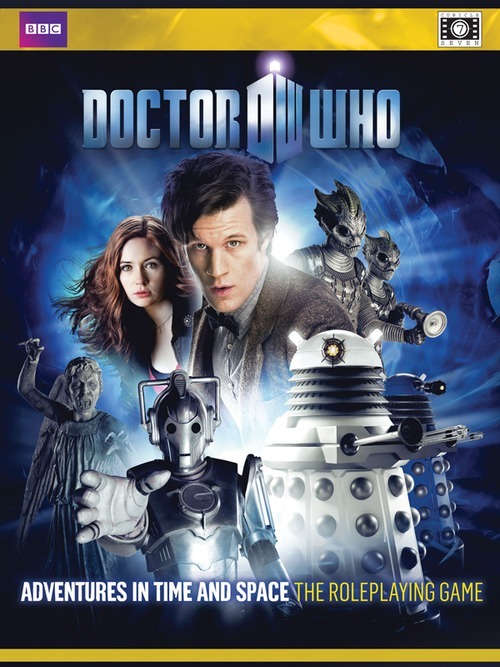
I’m certainly thinking of getting it eventually, if only to see the stats for creatures like the Daleks and the Cybermen!
But anyway, I’ve known about this game ever since it had David Tennant’s face on the cover, it’s not something new and I’ve been meaning to get it for a long time now. The reason why I’m writing this is… I’ve come across an interesting miniatures web site, to say the least!
Want to have a look at some of the miniatures they have? Okay then!
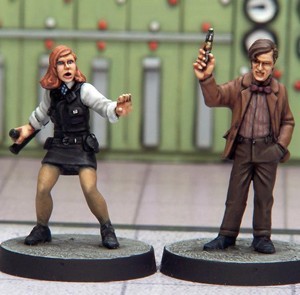
Here’s, um, ‘Tweedy & WPC May’. *Cough* The Doctor and Amy! *Cough!*
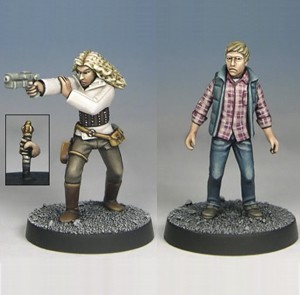
And here, we have ‘Action Melody Lake & William Killan’. *Cough* River Song and Rory Williams! *Cough*
O.k, for the rest I’ll stop pretending…
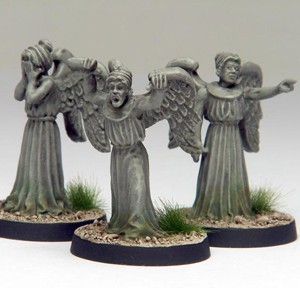
Weeping Angels!
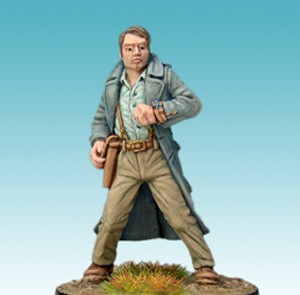
Captain Jack Harkness!

Amy Pond and Rose Tyler!
And then we have the company Black Tree Design with a whole line of Doctor Who miniatures which includes older versions of the Doctor… And yes, Daleks (this being one of many)!

Now, since we’re on the subject of sci-fi and miniatures, let’s take a look at Dwarven Forge! They not only have awesome stuff for medieval fantasy gaming, but they also have sci-fi sets.
Just look at the photos of those sets! LOOK AT THEM!
Now look at their Gamma Expansion Set… See those panels on the third row in the image? They’re all a quarter of a circle, so you can put them in corners, or put two together to place against a flat wall… Or… you can put all of them together… AND IT WILL TOTALLY LOOK LIKE A TARDIS CONSOLE!!!
What’s more, I could also use those sets for that Machinations of the Space Princess rpg that I’m getting more and more excited about, so it would have lots of replay value beyond doing games in the Whoniverse. And those sets, as seen in the photos section, work incredibly well for Star Wars games!
O.k, I’m done. Just had to get all of this out of my system!

I’m certainly thinking of getting it eventually, if only to see the stats for creatures like the Daleks and the Cybermen!
But anyway, I’ve known about this game ever since it had David Tennant’s face on the cover, it’s not something new and I’ve been meaning to get it for a long time now. The reason why I’m writing this is… I’ve come across an interesting miniatures web site, to say the least!
Want to have a look at some of the miniatures they have? Okay then!

Here’s, um, ‘Tweedy & WPC May’. *Cough* The Doctor and Amy! *Cough!*

And here, we have ‘Action Melody Lake & William Killan’. *Cough* River Song and Rory Williams! *Cough*
O.k, for the rest I’ll stop pretending…

Weeping Angels!

Captain Jack Harkness!

Amy Pond and Rose Tyler!
And then we have the company Black Tree Design with a whole line of Doctor Who miniatures which includes older versions of the Doctor… And yes, Daleks (this being one of many)!

Now, since we’re on the subject of sci-fi and miniatures, let’s take a look at Dwarven Forge! They not only have awesome stuff for medieval fantasy gaming, but they also have sci-fi sets.
Just look at the photos of those sets! LOOK AT THEM!
Now look at their Gamma Expansion Set… See those panels on the third row in the image? They’re all a quarter of a circle, so you can put them in corners, or put two together to place against a flat wall… Or… you can put all of them together… AND IT WILL TOTALLY LOOK LIKE A TARDIS CONSOLE!!!
What’s more, I could also use those sets for that Machinations of the Space Princess rpg that I’m getting more and more excited about, so it would have lots of replay value beyond doing games in the Whoniverse. And those sets, as seen in the photos section, work incredibly well for Star Wars games!
O.k, I’m done. Just had to get all of this out of my system!
Tuesday 2 April 2013
Pathfinder Encounters: The Monster Squad

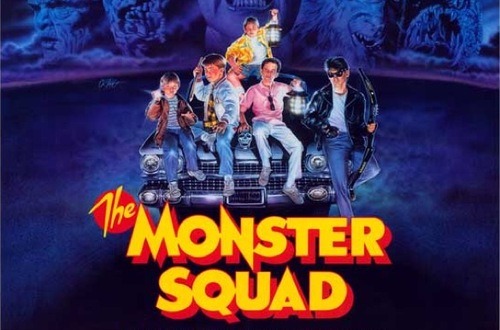
As I wrote my Movie Suggestion for ‘The Monster Squad’, I had a silly idea that I couldn’t get out of my head… The idea? To find out, in Pathfinder/d20 terms, just how tough the encounters in the movie were!
So if you want to know how well your Pathfinder characters would compare to a team of kids, their pet dog, a few adults and Frankenstein’s Monster, you’re about to find out!!!
Also, keep in mind that THERE ARE SPOILERS regarding the movie!
O.k, let’s take a look at the monsters…
- Dracula: (CR 9, 6400 XP) The sample vampire given in Pathfinder’s Bestiary suits Dracula perfectly. The levels in Sorcerer would cover his ability to Animate Dead seen at the beginning of the movie, his use of Magic Missile seen during the last fight and how he turned his car and himself incorporeal. (Although maybe the car itself was a magic item that could do that, but I digress.)
- The Vampire Brides: (CR 2 each, 1800 XP in total) The Vampire Template added to three Level 1 Commoners.
- The Wolfman: (CR 2, 600 XP) I’m using the Bestiary’s sample Werewolf for the Wolfman. The sample gives us a Werewolf with two levels in Fighter. Given how he’s able to fight many policemen at the same time while still human, I’m comfortable with that.
- The Mummy: (CR 5, 1600 XP) The Mummy from the Bestiary.
- Gillman: (CR 2, 600 XP) The Sahuagin from the Bestiary.
- Frankenstein’s Monster: A Flesh Golem (with Intelligence and Wisdom scores) from the Bestiary. He never actually fights the Monster Squad and joins them instead, so he’s considered a member of the Party.
- Encounter 1: (CR 11, 13 600 XP) The first Encounter is actually the most dangerous of the whole movie, both in itself and due to the fact that the amount of heroes present is less than the one at the end of the movie. The Encounter consists firstly of a Collapse (CR 8, 4800 XP, Pathfinder Core Rulebook p.415) which leaves Frankenstein’s Monster buried and out of the fight. Then the remaining members of the party must face Dracula, his 3 Vampire Brides and the Wolfman. They wisely decide to retreat.
- Encounter 2: (CR 5, 1600 XP) The Squad faces off against the Mummy and defeats it.
- Encounter 3: (CR 9, 9400 XP) This Encounter is actually just 200 XP short of being a CR 10 Encounter. The amount of Party members present is higher than ever before and many NPCs arrive to help. This Encounter consists of Dracula, the Vampire Brides, the Wolfman and Gillman.
'Dread' RPG Review
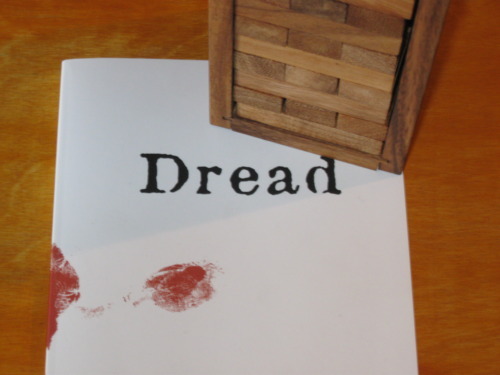
You know how every time a rules-light RPG comes out there’s always someone clamoring that the game in question is finally the perfect game to introduce newcomers to role-playing games? Yeah well, this is me clamoring that ‘Dread’ IS the perfect RPG game to introduce someone to tabletop RPGs! Or the perfect ‘system’ (apostrophes explained in a moment) to run a game when you have the story planned out in your mind but haven’t had time to come up with/write some stats.
The game was designed for horror games in mind and while I think it’s the most fitting genre for it, nothing should stop someone from trying another genre as long as the characters are in some sort of danger, physical or otherwise. (And is there an RPG where characters aren’t?)
There are character sheets but they’re completely devoid of stats. Instead, the GM will ask the players some questions about their characters which the players have to answer. Some of them can actually impose some facets into the characters’ backgrounds! Example from the book: “What are you recovering from and why do you think it’s taking so long?” These questions can sometimes make someone slightly uncomfortable because they might have to go places they usually wouldn’t when thinking about their characters. The question from the example is obviously something negative that’s happened to them, however the player can take it from there and decide what it is. This way of doing things is actually amazing! As soon as the game starts, my two players already had a really good idea of who their characters were, didn’t hesitate in their characterization and seemed to already care about what would happen to them because during the ‘questions’ process they had thought about who these characters were. They had imagined them as people, what they feared and what gave them hope, and that had made them care about their fate. I have rarely seen players inhabit their roles so quickly in a RPG!
O.k, so about the ‘system’… It’s not really a game system as much as a set of rules to guide a story. First of all, say good-bye to your dice. ‘Dread’ is played with a ‘Jenga’ set! You read that right! The rules make for incredibly fast-paced and incredibly stressful game sessions! Basically, if your character could logically do something, he simply does it. If there’s no logical way he could, then he doesn’t. Simple. In the moments when there is doubt though, that’s when you pull a block! (Or more if the task at hand is difficult!) If the tower topples over, the character is removed from the game and the tower is reset. Players can sometimes choose not to pull the block and deal with minor consequences instead, but not always. For example, if a character has to jump from one building roof to another and the player decides not to pull a block. The GM could determine that the character simply changes his mind and doesn’t attempt the jump. Or if he was being chased by a monster and had no choice but to jump, then he jumped but failed to reach the other building, fell down on the fire escape and twisted an ankle. A lot is left on the shoulders of the GM because the nature of the game is extremely narrative.
Other reviewers have claimed that while this is an excellent game (Which I completely agree with!) it would be difficult to run a long-running story with it because the mortality rate of the characters is supposedly too high, given that as soon as the tower topples, a character is removed from the game. I can see where that point of view comes from but respectfully disagree. The book clearly states that a character being removed from the game isn’t necessarily a dead character. Of course in some cases it couldn’t be anything else. If the character pulls a block to see if they escape from the serial killer and they topple over the tower, the obvious consequence is that the serial killer caught up with them and killed them. But in other cases, toppling the tower can be something else. If the character is in no direct danger, two things can happen. The first is that the character can find himself a ‘ghost’, in that they can no longer pull blocks and directly affect the story, the character is going to die soon and the player knows it but they can still play their role until that comes to happen. Or as a second option, the character could be removed from the game in any other way available. Maybe they go insane from all the horrors they’ve seen and are sent to an asylum. Maybe a family member is in the hospital and they need to be there for them. Many ways to remove a character from the current game can allow for them to come back another time. I completely agree that it might be trickier to run a long-running game with this system, but I wouldn’t say it’s impossible.I think that avoiding unnecessary block-pulling will already go a long way if you want the characters to survive for many game sessions.
The book also comes with lots of advice on running a horror game and gives you three example scenarios. One is a werewolf story, the other a sci-fi horror scenario and the third is in the splatterpunk genre. I have only browsed through those at the moment so I can’t review the adventures in themselves, but even if you don’t use them they seem to me like solid examples of how to run a ‘Dread’ game.
So how efficient is this game for horror and how easy is it to play? I bought the book the very same day I ran our first game with it. I was going to read it but fell asleep on my couch and woke up when my friends came over. I quickly read the rules on the spot during the time it took for a ‘Magic: The Gathering’ game between my two players and I was ready to run the game! It is that easy to use!
The game I ran was a sci-fi horror game. Ironically the idea didn’t even come to me because of the scenario given in the book, I’d genuinely been wanting to run one for a while now and the game presented the perfect opportunity to do so. I had an idea in mind and I was ready to go. I think that alone will make me run a lot of ‘Dread’ games in the future, the fact that all you need to run a game is the idea, you don’t need to waste time doing ‘homework’ to prepare it as far as statistics go.
The use of ‘Jenga’ to resolve actions is genius, as the players will feel the titular dread when it’s time to pull a block or two. I was even more impressed when during the game session the players agreed that one action in particular should be much more easy for one of the characters and found myself going along with it, making the older character pull two blocks instead of one for the physical task they had to accomplish.
Oh and a last detail that I found somewhat funny? In a way, the game does encourage the ‘Let’s split up’ horror movie trope! If there’s a dangerous area to explore that will necessitate block pulling to reach, players might not want to start pulling more blocks than necessary from the tower. Good players won’t metagame too much (and in fact mine didn’t) but I think it might affect games at least on a subconscious level.
So to conclude, this might be the greatest horror RPG I’ve ever played. Maybe I’m still in the ‘honeymoon’ phase because I just got it yesterday and the game ran smoothly but that’s how it seems to me right now. And while I haven’t tried that yet, I think this might be the perfect game to bring non-RPG players into RPGs. I highly recommend it.

Monday 1 April 2013
D&D House Rule: Cloaks & Backpacks
"A cloak slows you down in a fight." - Bronn ('Game of Thrones' TV series)
While playing a swashbuckling, lightly-armored character in one campaign, I was often annoyed at the idea of imagining my dexterous character burdened with a backpack.
I imagined that if someone was expecting a fight, they'd make sure to remove their backpack before entering a dungeon, or going into a battlefield. In real life, having a backpack on can be a serious issue when it comes to being grabbed from behind, as it's easy for someone to pull you backwards and then to the ground.
But when it comes to D&D, as long as the contents of the backpack don't give you any extra encumbrance, you're good to go! There's just no practical reason not to wear a backpack during a fight, despite all the logical reasons one could think of in real life. The same goes for cloaks.
So here are some house rules to implement such logic into D&D. While I can't speak for every single variant and edition of it that exists, I'm confident they can work well with pretty much all of them.
Backpacks
- If a character is tripped while wearing a backpack, the DM must roll 1d4. On a roll of 1, the character fell on top of his backpack. The DM must roll 1d4 again, representing the damage the contents of the backpack take due to the fall. The damage can be to a single object, or distributed, as decided by the DM, either randomly or by logic.
Should a character actually fall from a high place instead of being tripped (or due to a trip!), the DM must roll the first 1d4 as before to see if the character falls on his backpack. If it comes up on a 1, the character and the backpack take the same falling damage. That said, if the backpack contained objects that could possibly soften a fall (A pillow, bed sheets, etc) then the DM could remove 1-3 HP of damage from the total falling damage.
- Anyone trying to grab/grapple the character from behind gets a +2 to their roll if they choose to grab the backpack. If the backpack is full, make it a +3.
If the attacker rolls a natural 20 or exceeds the required number on his roll by 5 or more, he has managed to really entangle the character in his own backpack. The defender is at -2 to get out of the grapple, and getting out of it means he'll have to leave his backpack in the hands of the attacker. (Which might sometimes be what the attacker wanted.) Optionally, a character could use a small cutting weapon to cut himself free of his own backpack in 1d3 rounds. This will, again, leave the backpack in the hands of the attacker.
Anyone who has successfully grappled someone by their backpack also gets a +2 to any roll made to trip them to the ground. However, if the attacker wants to continue the grapple after such a trip, he must follow the backpack-wearer to the ground and also become prone to others.
Cloaks
- Anyone trying to grab/grapple the character gets a +1 to their roll if they choose to grab the cloak.
If the attacker rolls a natural 20 or exceeds the required number on his roll by 5 or more, he has managed to really entangle the character in his own cloak. The defender is at -2 to get out of the grapple, and getting out of it means he'll have to leave his cloak in the hands of the attacker. (Which might sometimes be what the attacker wanted in the case of fancy or magical cloaks.) Optionally, a character could use a small cutting weapon to cut himself free of his own cloak in 1d3 rounds. This will, again, leave the cloak in the hands of the attacker.
- Anyone pulling a medium or bigger weapon from under a cloak gets a -1 penalty on their first attack, since when worn a cloak will usually cover one's arms. After that first attack, the cloak can be considered out of the way unless the character rolled a natural 1, in which case the penalty remains for another round as the cloak is still in the way.
A character can pull his cloak back over their shoulders ahead of time if they expect trouble to avoid this. (Or they can pull their weapon ahead of time, but sometimes outright drawing a weapon can make the difference between a possible fight and an unavoidable fight.)
- Anyone wearing a cloak over their arms and shoulders gets a bonus to protect themselves from the rain and cold. The bonus will depend on the quality of the cloak. A good cloak will also protect carried objects from the rain.
- Depending of the color of the cloak, a character could get either a bonus or a penalty on a hiding roll depending on the environment they find themselves in, up to the DM's discretion.
Subscribe to:
Posts (Atom)






